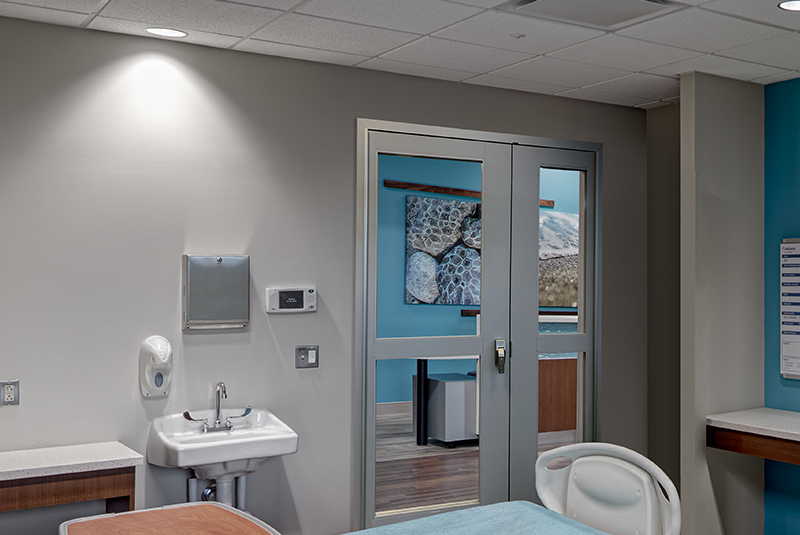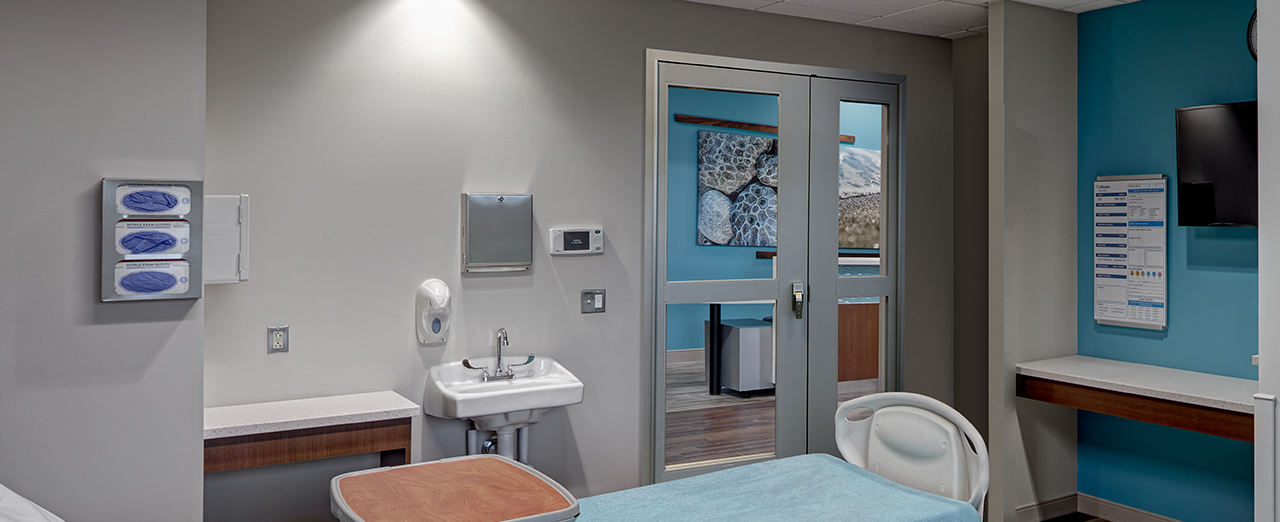
But how do architects prioritize flexibility in building design? While there are several considerations to take into account, flexible openings can help achieve these goals by providing large opening doors that accommodate different equipment and without needing extra space for increased swing arc trajectories during everyday use. Given the benefits of flexible healthcare design, Tysen Gannon, LEED AP, answers the following four questions about it and how hospital room doors play an integral part in flexible design.
Q. What is flexible healthcare design, and why is it important?
A. Healthcare spaces need to be adaptable to accommodate different types of patients, functions and equipment. We saw this quite clearly during the height of the COVID-19 pandemic when hospitals and even clinics were hit with surges of patients and had to implement new protocols rapidly to deal with a serious and highly transmissible virus.
In addition to unforeseeable circumstances, it is likely a healthcare space will serve multiple specialties or purposes over its service life or that there will be major advances in technology or new patient needs that require spaces to flex. Flexible designs that accommodate either known or unknown potential future factors are critical to healthcare spaces functioning well.
Q. What role do hospital room doors play in flexible design?
A. As the “portal” to the room, doors provide several essential functions. First and foremost, they have to be designed so the necessary people and equipment can pass through with ease—especially in emergency situations. They must also be able to withstand the considerable wear and tear of heavy traffic (again people and equipment) all day long, day after day, year after year.
Further, doors for patient rooms must perform multiple functions such as protecting patients during emergency situations with smoke ratings, providing an acoustic barrier, meeting accessibility requirements and operating as quietly as possible.
Flexible door solutions have to check all these required boxes and consider potential future use needs they may have to accommodate. For example, most of the time a room may house a highly ambulatory patient, but in certain circumstances a patient room door may need to allow a standard or even bariatric bed to be wheeled into the room for a patient with limited mobility.
Flexible solutions ensure the hospital room door is an opening and not an obstacle.
Q. How do flexible openings contribute to accessibility?
A. All doors for healthcare settings generally must, at a minimum, meet the Americans with Disabilities Act (ADA) standards for accessibility. For higher levels of performance, they will need to meet life safety needs from FGI Guidelines and the International Building Code (IBC). There are, of course, other criteria regarding the operation of hospital room doors. But these are the main ones for accessibility.
Doors for patient rooms should be easy to operate for both patients and providers. If those doors have special functionality, those features must be easy to use and highly reliable. For instance, the DualSwing™ door system’s auxiliary leaf can create a wide opening door when needed without taking up extra space for a larger swing arc trajectory during everyday use. This design enhances a hospital room door’s ability to accommodate large equipment or patient transport, improving a patient’s access to care and the provider’s access to their patient.
Q. Aside from opening width, what qualities are important for a hospital room door?
A. Hospital room doors need to be reliable in terms of operation and maintenance. They need to meet ADA, IBC and other applicable standards for life safety and accessibility. Often, this means creating a safe haven from smoke and flames for those who cannot be quickly evacuated. In addition to protecting patient confidentiality, good acoustic performance can also increase patient and staff comfort by reducing noise transfer between spaces. The doors must also have well-designed hardware that meets the needs of the space and is easy to clean. Finally, they should allow for visual communication or privacy as needed. Patient room doors that can accommodate different materials, like opaque glazing, integral blinds or paddle hardware, can meet almost any design intent for a space.
Flexible healthcare design benefits both those receiving care and those providing it
Designing a healthcare setting that can efficiently respond to shifting needs and accommodations ensures healthcare staff can provide the best care to their patients. It also creates a space that removes obstacles to improve accessibility.
Hospital room doors that offer flexible openings can help achieve these goals and more. When these doors are intuitive to operate, reliably constructed and able to meet a range of design considerations, they can be a step toward a built environment that works for its occupants and their changing needs.







